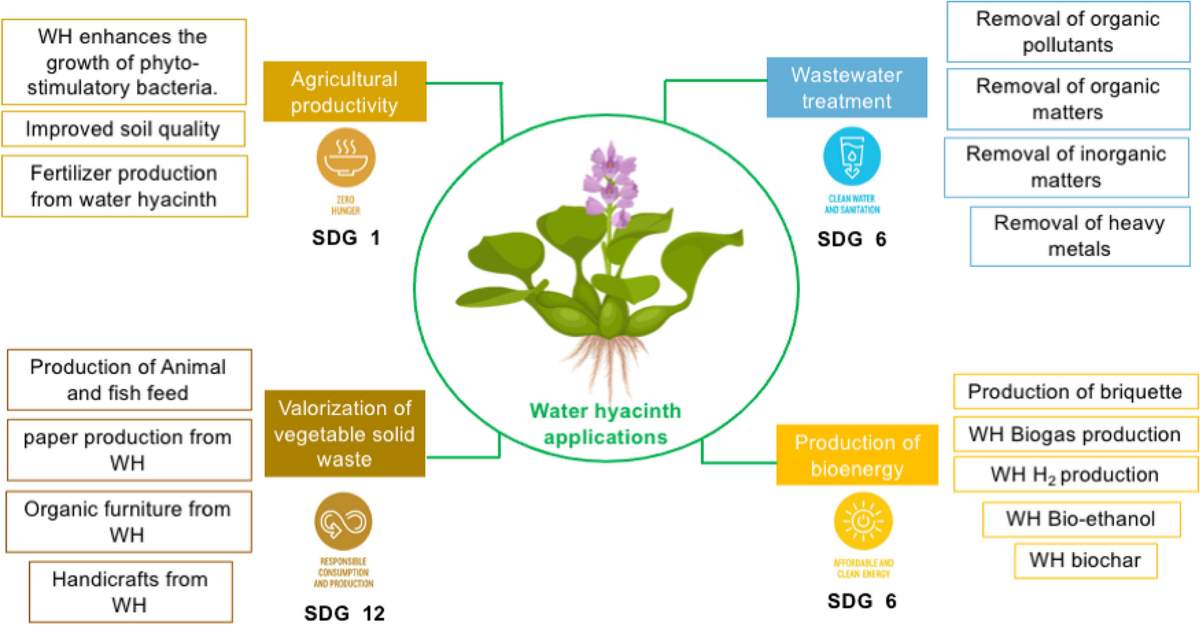Water Hyacinth: Care, Risks, Uses, and How to Manage This Invasive Plant in the UK

Water hyacinth is a visually striking aquatic plant that has captured the interest of gardeners and home decorators alike. With its glossy green leaves and delicate purple flowers, it can transform a pond or water feature into a lush display. Originally from South America, water hyacinth has spread to many regions, including the UK, where it is often grown in controlled environments to prevent ecological issues.
Despite its beauty, water hyacinth is considered one of the world’s most invasive aquatic plants. Its rapid growth can form dense mats on water surfaces, blocking sunlight, reducing oxygen levels, and impacting native aquatic life. Understanding how to care for, use, and manage water hyacinth is essential for anyone wishing to cultivate it responsibly in the UK.
What is Water Hyacinth
Water hyacinth, scientifically known as Eichhornia crassipes, is a free-floating perennial plant that thrives in freshwater environments. It features thick, waxy leaves, bulbous stalks, and clusters of violet flowers that bloom in summer. In the UK, water hyacinth is typically seen in ponds, water gardens, or aquascaping setups rather than in the wild due to strict regulations on invasive plants.
Common water hyacinth spreads rapidly through runners, allowing it to cover large water areas if not monitored. Its floating roots provide shelter for aquatic microfauna, but this same characteristic contributes to its invasive potential. Many gardeners also appreciate water hyacinth for its practical uses, such as in decorative baskets, storage trays, and vases, which showcase its versatility beyond natural water habitats.
Caring for Water Hyacinth
Caring for water hyacinth indoors requires consistent attention to light, water, and temperature. The plant thrives in bright, indirect sunlight and warm, humid conditions. Indoor gardeners often use water hyacinth trays to maintain water levels, ensuring the roots remain submerged and healthy. Regular water changes prevent stagnation, which can lead to root rot or poor growth.
For outdoor ponds, water hyacinth flourishes in still or slow-moving water with abundant sunlight. Maintaining water quality is crucial, as excess nutrients can promote uncontrolled growth or attract pests. Gardeners are advised to thin the plant regularly to avoid dense mats forming, which can limit oxygen for fish and other aquatic organisms. Water hyacinth baskets or trays can also help contain the plant and make management easier.
Risks and Challenges of Water Hyacinth

While water hyacinth is attractive, it poses several environmental risks. Its rapid growth allows it to form thick mats on pond surfaces, blocking sunlight from reaching underwater plants and reducing oxygen levels, which can harm fish and other aquatic life. In the UK, water hyacinth is considered a controlled species, and releasing it into natural waterways is illegal.
Pests and diseases also affect water hyacinth. Fungal infections and insects can weaken the plant, while decaying mats can pollute water and create unpleasant odours. Gardeners must monitor their water hyacinth closely, removing dead leaves and stems promptly. Responsible cultivation is essential to enjoy the beauty and utility of water hyacinth without causing ecological problems.
Managing and Controlling Water Hyacinth
Physical removal is the most common method of controlling water hyacinth. Gardeners can scoop or cut the plant regularly to prevent overgrowth and maintain a healthy pond environment. For larger water bodies, biological control using specific insects has been successful in limiting water hyacinth spread.
Preventative measures are essential for managing water hyacinth. Growing the plant in containers, water hyacinth trays, or baskets reduces the risk of accidental escape into natural waterways. Regular monitoring, thinning, and responsible disposal help maintain a balance between enjoying water hyacinth as a decorative feature and preventing its invasive behaviour.
Uses of Water Hyacinth
Water hyacinth is not only valued for its aquatic beauty but also for its versatility in home décor. Its flexible stems and durable fibres are used to make water hyacinth baskets, storage baskets, laundry baskets, rectangular storage baskets, and even vases. Many UK homes incorporate water hyacinth items for a natural, eco-friendly aesthetic.
Beyond decoration, water hyacinth has practical and sustainable uses. It can be composted, used as mulch, or even processed into biofuel. Crafting water hyacinth baskets with lids, trays, placemats, and tree skirts showcases its adaptability, offering functional solutions while reducing environmental waste. Responsible harvesting ensures these products remain sustainable.
Buying Water Hyacinth Products in the UK
Water hyacinth products are increasingly popular in the UK and can be purchased through online stores, craft markets, and home décor shops. From laundry baskets to decorative vases and trays, the variety of products caters to both aesthetic and functional needs. Choosing quality water hyacinth items ensures longevity and a polished look in homes.
Maintaining water hyacinth products is straightforward but essential for durability. Keeping baskets dry, avoiding prolonged exposure to sunlight, and cleaning regularly can prolong their lifespan. Well-maintained water hyacinth items, such as storage baskets with lids or decorative trays, can last for years while providing a sustainable alternative to synthetic materials.
Conclusion
Water hyacinth is a remarkable plant that combines natural beauty with functional applications in home décor. By understanding its care requirements, recognising the environmental risks, and managing its growth responsibly, gardeners and homeowners can safely enjoy water hyacinth in the UK. The plant’s versatility in baskets, vases, and trays adds an eco-friendly touch to any space.
Responsible use of water hyacinth ensures that it remains a sustainable and decorative addition rather than an ecological threat. Awareness of its invasive potential, careful maintenance, and creative applications allow people to enjoy the full benefits of water hyacinth without harming the environment.
You may also read: Planting Montbretia in the UK





